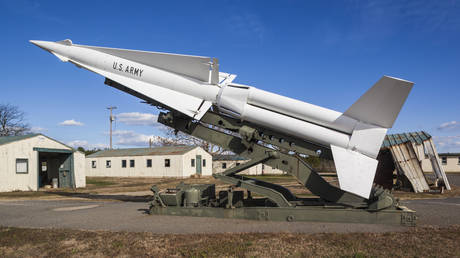ARTICLE AD BOX
BRUSSELS — For decades, European governments accepted that the decline of their polluting, loss-making steel industries was inevitable and irreversible.
No more. After years of neglect, developed economies are discovering they don’t want to depend on even dirtier sources of steel made in China, Southeast Asia and North Africa.
The bloated global steel sector — “overcapacity” in the jargon — is nothing new. What’s new is U.S. President Donald Trump’s 25 percent tariffs on the metal. That means even more subsidized steel will head to the region from China, Indonesia, Turkey and Egypt that has been shut out of the American market.
The bailout is starting.
The U.K. has just renationalized its only steel plant that makes the metal from scratch. Last month, the EU launched a Steel Action Plan to revive the sector and stave off total collapse. And Australia is shelling out billions to turn a steel plant into a green pioneer.
In the EU, €9 billion of state aid has been approved over the last few years. The Steel Action Plan will push defense research to expand the customer base in Europe. Another €100 billion is on the way to support scaling up carbon-free production. Policy incentives should help as well, such as making sure there’s a market for more expensive, but less polluting, steel.
“We need to go even further,” French Industry and Energy Minister Marc Ferracci told reporters on a recent visit to the eastern steelmaking region of Alsace. Steel major ArcelorMittal has just announced it would cut around 600 jobs in France, with more to go in Belgium, too.
The context, Ferracci said, is simple. “Chinese steel that is massively subsidized” has been pummeling the EU for years, chipping away at the market share of domestic steel. Added to that, are the “tariffs decided by the American administration,” he said.
Sunset industry
It’s not an easy sell.
As it stands, the sector is not ready for the future, said steel transformation expert Boris Jankowiak at the Climate Action Network, a federation of NGOs. “At the moment we have a fossil-based steel industry that is facing several struggles,” he told POLITICO. “It’s not going to get better by sticking with fossil fuels.”
Buying up a primary steel plant, as the U.K. government did, will not solve energy prices, slumping demand or reliance on coal and gas. From the Commission’s action plan, the contours are clear: energy prices need to come down, certain sectors need to start buying cleaner European steel over “dirty” foreign steel — and we need to recycle more.
“All the pieces of the puzzle are there,” Jankowiak said. “So now it’s just about showing leadership and commitment to that transformation — also from the companies’ side.”
 Developed economies are discovering they don’t want to depend on even dirtier sources of steel made in China, Southeast Asia and North Africa. | Alex Plavevski/EPA
Developed economies are discovering they don’t want to depend on even dirtier sources of steel made in China, Southeast Asia and North Africa. | Alex Plavevski/EPASteel plants across the EU, like Italy’s Taranto works, have faced criticism for polluting the air, water and soil. Not many people are, understandably, happy to have a coking plant in their backyard.
But, luckily, steel goes into so many products that it can be molded into whatever the Zeitgeist requires. Back in 2020, it was the green transition. Then, steel was heralded as the core of renewable energy, enabling local production of wind turbines (instead of importing them from China). “Green” battle tanks are the most recent argument.
When he presented the Steel Action Plan at a plant in Germany’s post-industrial Ruhr region last month, European Industry Commissioner Stéphane Séjourné stressed that it was a crucial cog “in the economic and material sovereignty of the entire European continent.” The action plan itself points out that a main battle tank contains 60 tons of steel.
Séjourné’s plan was received positively by the sector and the EU countries who produce the most steel: Germany produces about a quarter, with Italy coming in second at around 10 percent. France, Romania and Poland each account for more than 7 percent of the European total, based on figures from lobby group Eurofer. The sector is spread widely across the bloc, with just five countries producing no steel.
Post-Covid and in the middle of attempts to get rid of Europe’s decade-long dependency on Russian gas, a fresh dependency on basic Chinese industrial inputs is Brussels’ worst nightmare.
Aside from security, there’s also employment. Ferracci said the French government is “supporting Arcelor’s decarbonization projects, which should help maintain jobs. Now, it’s time for these projects to materialize.”
Some 300,000 people work in the steel industry in the EU, with another 37,000 in the U.K. While that is not much on the total labor market, once you lose steel, it could well spell the end for other much larger industries like carmaking or — indeed — defense and green energy.
“It’s a similar shift [like the pandemic or Ukraine in 2022], but this time it is accelerating to an unprecedented pace,” a Commission official told POLITICO last month, pointing to the trinity of action plans on defense, industry and financing.
Jankowiak, from the Climate Action Network, cautioned against “catchy” applications for steel. “Can production of tanks really create enough demand for steel on an industry level? And in the long term, this would rely on the tanks and artillery shells to be used — in case a war is actually waged. And this is not what we are calling for.”
Nicolas Camut contributed to this report.
.png)
 3 months ago
3
3 months ago
3








 English (US)
English (US)